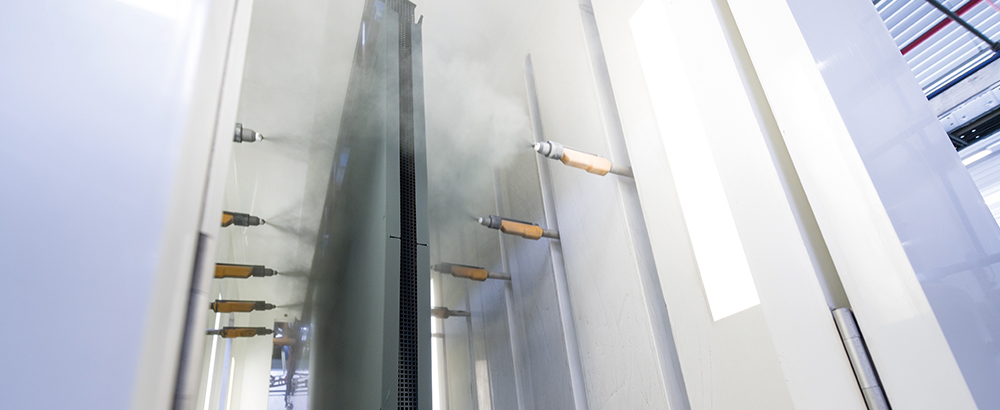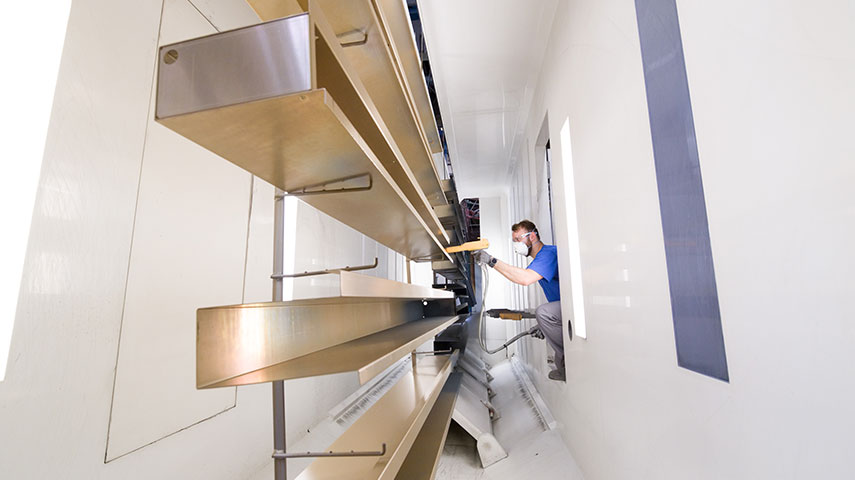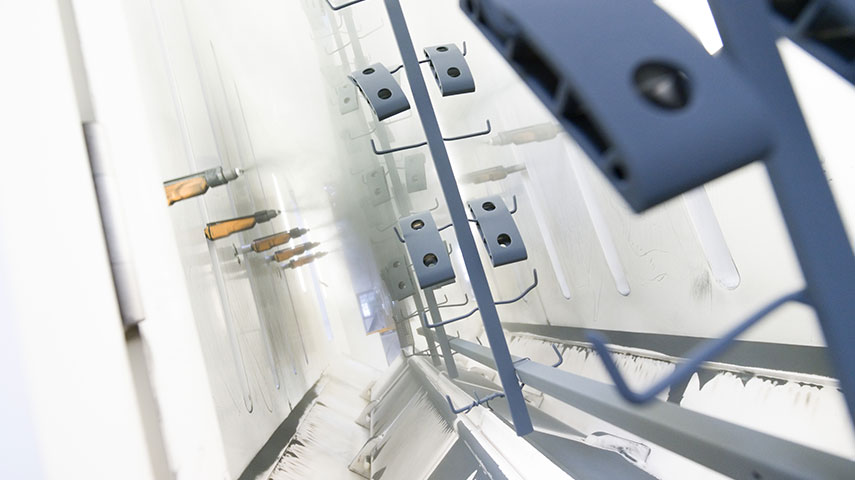Powder coating process quickly explained
The powder coating paint is electrically charged, applied to the steel or aluminium workpiece using spray nozzles and then cured.

The powder coating paint is electrically charged, applied to the steel or aluminium workpiece using spray nozzles and then cured.
The powder coating process enables the production of a variety of surfaces such as glossy, matt, semi-gloss, finely textured, coarsely textured in various qualities such as standard facade quality, highly weather-resistant and indoor quality. The RAL, Pantone and NCS colour palettes are available in full. AGRU Oberflächentechnik coats in line with the GSB Master, British Standard and Sea Proof Plus standards.
High-quality pre-treatment is a decisive factor in the powder coating process as it ensures a strong adhesion bond on the workpiece; this is what makes pre-treatment such an essential element of the powder coating process. It consists of multiple steps. First of all, the workpieces must be cleaned to remove surface contaminants such as rust, soiling and grease. Following this, the workpieces are primed to ensure superior paint bonding. This can be done by chromating, pre-anodising or using a chromium-free pre-treatment. Following this, the powder coating paint is applied in the powder coating process using electrostatically-charged paint particles. The powder spray guns generate an electrostatic powder cloud, the particles in the cloud precipitate on the surface of the workpieces, where they are electrostatically bonded to form the powder coating layer. Finally, the powder coating is cross-linked in the curing oven.
The curing temperatures for powder coating are typically between 140 and 200 °C, although 140 °C is considered to be low-temperature coating. Powder coatings are used for components in a wide range of areas such as facades, window and door profiles, fences and machine components. After the powder coating has been automatically or manually applied, it is cured in a curing oven in line with the requirements for the powder type and material.

